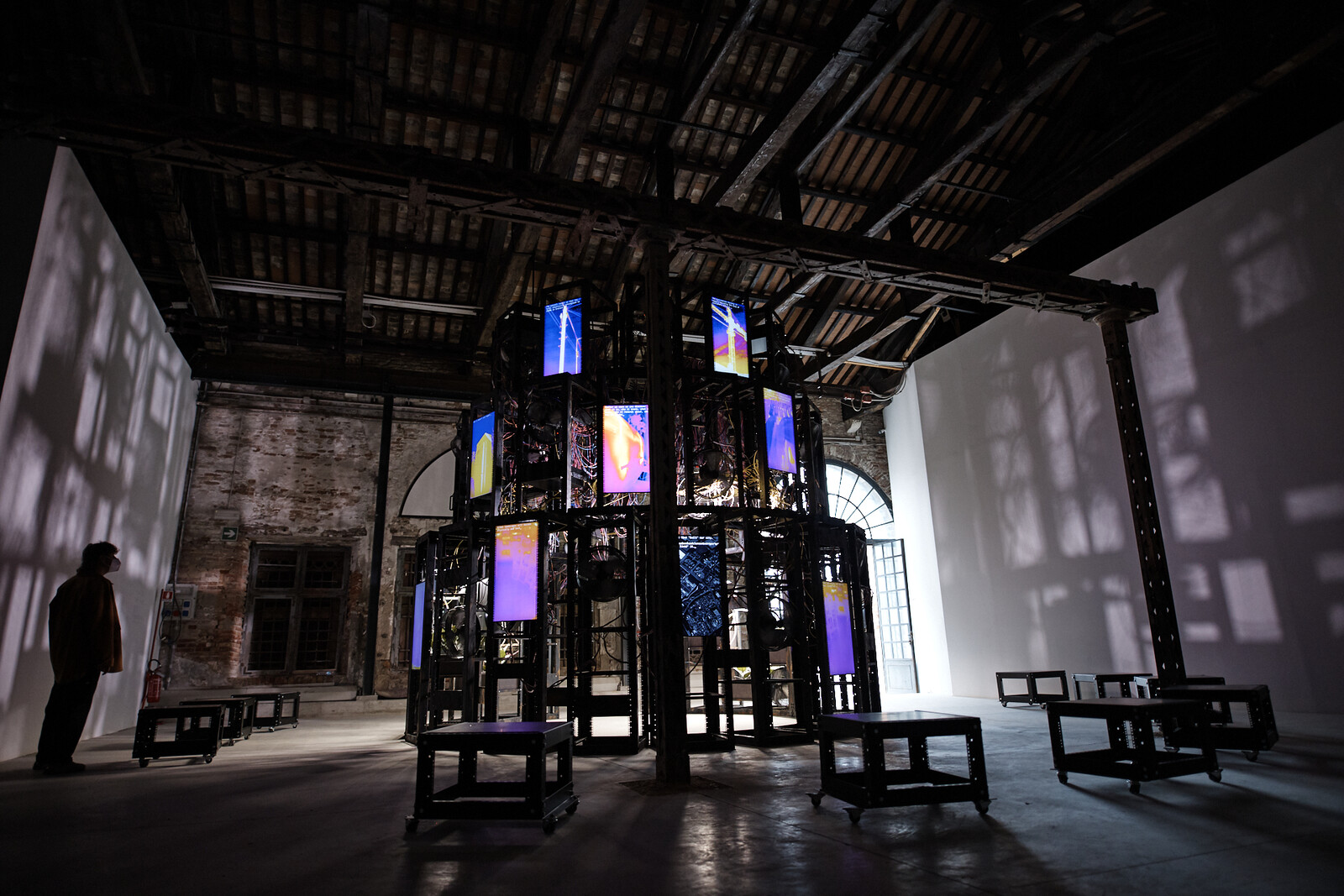Entanglement
May 22–November 21, 2021
Entanglement exposes the romantic metaphor of the cloud as a virtual, ethereal space. By using the prism of heat it explores the materiality of data and the spaces it produces alongside the interwoven human, environmental, and cultural impacts of information and communication technologies.
Technological development from the stone age to the industrial revolution is inextricably tied to thermal energy. In his 1851 text, The Four Elements of Architecture, architectural theorist Gottfried Semper writes that fire is “the first and most important and moral element of architecture” around which the first human groups assembled and formed alliances. “Throughout all phases of society, the hearth has formed that sacred focus around which took order and shape.”
Entanglement performs the thermodynamic processes without which the production and distribution of data would not be possible. By foregrounding these thermodynamic processes as a link between the architectures of the campfire and the data centre, the pavilion speculates on the relationship between these forms and how diverse communities converge around them in the past and into the future. Highlighting the materiality of our digital age, the pavilion subverts a fundamental artifact of the network—the server cabinet—to uncloud the sleek aesthetic of an industry that is forming our realities. The structure of the pavilion draws from both contemporary and historical data storage artefacts.
The materiality of global data infrastructure now reveals itself locally across the Irish landscapes as a vast network; in 2019, Dublin overtook London as the data centre capital of Europe. By the year 2027, data centres are forecast to consume 31 percent of Ireland’s total electricity demand, the vast majority of which will be generated from fossil fuels. This is not a new story. Historically, Ireland has played a significant role in the story of data infrastructure. In 1858, the world’s first transatlantic telecommunication cable landed at Valentia Island, a sparsely populated, rural wilderness off the southwest coast of Ireland. Extending from Newfoundland in Canada, the cable rendered the remote 11-kilometer-long island as the most connected node in a global telecommunications network. No longer would Valentia’s morphological attributes—a few small village clusters, gently sloping topography, rugged coastline, and patchwork of fields—be presented as its most essential characteristics. Instead, the meaning of space would be defined by the umbilical communication infrastructure that infiltrated its earthly mass. Valentia was not only a physical, geospatial construct but had been augmented as an information space.
Entanglement argues that the digital is material—the cloud is a complex, spatio-temporal material reality. It is not an ethereal and abstract space but has distinct material and environmental footprints that compel us to reevaluate the utopian fantasy of digital communication and to reflect on how we live together through data infrastructure, today and into the future.
Ireland at Venice is an initiative of Culture Ireland in partnership with the Arts Council.
Annex is an international multidisciplinary research and design collective, comprised of a core team of architects, artists, and urbanists, whose work operates between and beyond the subject areas of computer science, gaming platforms, technology and public space, data centres, sensor technology, and large technical systems. Members include Sven Anderson, Alan Butler, David Capener, Donal Lally, Clare Lyster and Fiona McDermott.
The pavilion is supported by: The Department of Tourism, Culture, Arts, Gaeltacht, Sport and Media; Royal Institute of Architects Ireland; TU Dublin School of Creative Arts; TU Dublin Graduate School of Creative Arts and Media; Trinity College Dublin; CONNECT Research Centre for Future Networks and Communications; University of Illinois at Chicago, Creative Activity Award; Queens University Belfast; Valentia Slate, ARUP, Office of Public Works and Green on Red Gallery.






